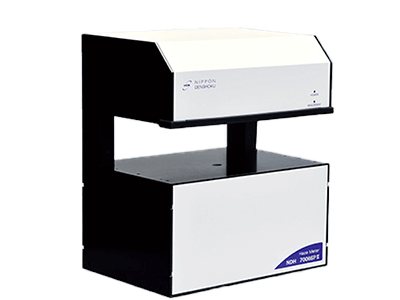What Is a Haze Meter?

A haze meter is a device, also known as a transmittance meter or cloudiness meter, designed to measure the degree of cloudiness or haze in materials such as film and glass. Haze, indicating the degree of cloudiness, is measured by detecting the light transmitted or diffused when a sample is illuminated by a light source.
Haze meters are crucial in evaluating transparent materials, commonly used as an indicator for assessing the quality of optical films on LCDs and tablet surfaces.
Uses of Haze Meters
Haze meters assess the cloudiness level of a sample, enabling the evaluation of its transparency, optical characteristics, and surface quality. They are particularly useful in analyzing the optical properties of transparent materials, such as plastics.
Common applications include evaluating glass for construction and automotive use, optical films on solar cells, LCDs, touch panels, and smartphones. They also play a significant role in processes aimed at reducing glare, such as anti-glare treatments.
Principle of Haze Meters
A haze meter functions as a transmittance meter, capable of measuring the fogging degree in films and glass. The device comprises multiple components including light sources, lenses, integrating spheres, photodetectors, and traps. It effectively distinguishes and measures both transmitted and diffused light.
The haze value, representing the ratio of diffuse to total light transmittance, is calculated using the formula: Haze (%) = (Diffuse Transmittance / Total Light Transmittance) × 100. The total light transmittance includes all light passing through the sample, while the diffuse transmittance encompasses only the diffused light. A sample with high transparency will have a low haze value, whereas a cloudy or turbid sample will exhibit a higher haze value.